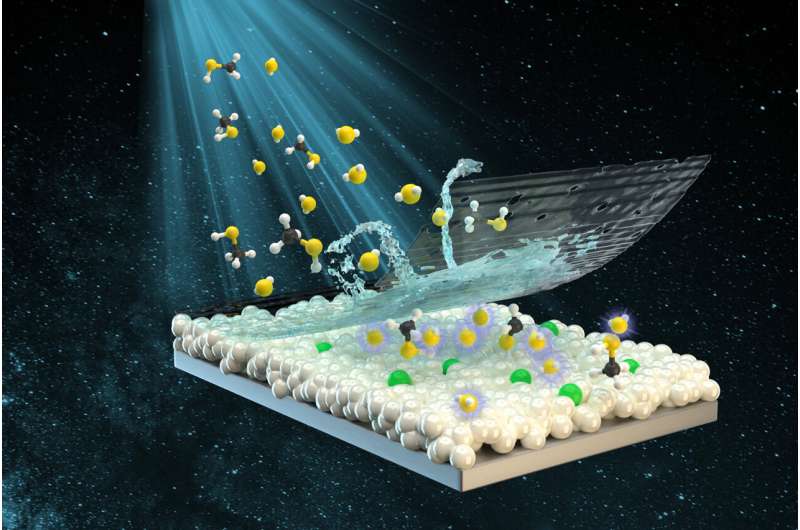This article has been reviewed according to Science X's editorial process and policies. Editors have highlighted the following attributes while ensuring the content's credibility:
fact-checked
peer-reviewed publication
trusted source
proofread
Hydrophobic molecular sieve developed for humidity-resistant hydrogen sulfide sensor

A research team led by Prof. Meng Gang from the Hefei Institutes of Physical Science of the Chinese Academy of Sciences has used polydimethylsiloxane (PDMS) in the research of high performance humidity resistant hydrogen sulfide (H2S) sensors, paving the way for the practical applications of H2S chemiresistors in an ambient humid air atmosphere.
The results have been published in ACS Applied Materials & Interfaces and Chemical Communications.
H2S is a colorless, flammable, explosive, highly corrosive, and highly toxic gas that is widely found in semi-closed and high humidity environments. Some oxides, including delafossite, ZnO, and CuO, have a high sensitivity to H2S in dry air, but humidity tends to interfere with the response of the sensors. In addition, H2S is a highly corrosive gas, and its corrosiveness increases with the increase of humidity. This leads to rapid corrosion and degradation of sensors in high humidity environments, which becomes a major challenge for the practical application of sensors.
To solve these problems, the scientists deposited a hydrophobic and semi-permeable membrane of PDMS on the Pt single atom-anchored cupric chromate (CuCrO2) by the thermal evaporation method.
Zhang Ruofan, first author of the study, described the biofunctional role of PDMS as "killing two birds with one stone."
PDMS had a hydrophobic nature. It could effectively isolate the penetration of water vapor in the environment, weaken the influence of environmental humidity on the sensor, and significantly improve the long-term stability of the sensor in a humid environment.
On the other hand, the micropores in the PDMS membrane could effectively block methyl mercaptan molecules whose diameter was slightly larger than that of H2S. It acted as a "molecular sieve," further improving the selectivity of the sensor for H2S.
The humidity-resistant H2S sensor based on PDMS-coated CuCrO2 had a low operating temperature (100 ℃), a high response (up to 151 for 5 ppm H2S at 50% relative humidity), high selectivity, and good long-term stability, which laid an important foundation for the practical application of H2S sensor in petrochemical, natural gas, and other fields.
More information: Ruofan Zhang et al, Pt-Anchored CuCrO2 for Low-Temperature-Operating High-Performance H2S Chemiresistors, ACS Applied Materials & Interfaces (2022). DOI: 10.1021/acsami.2c00619
Ruofan Zhang et al, Bifunctional role of PDMS membrane in designing humidity-tolerant H2S chemiresistors with high selectivity, Chemical Communications (2023). DOI: 10.1039/D2CC05880D
Journal information: ACS Applied Materials and Interfaces , Chemical Communications
Provided by Chinese Academy of Sciences




















